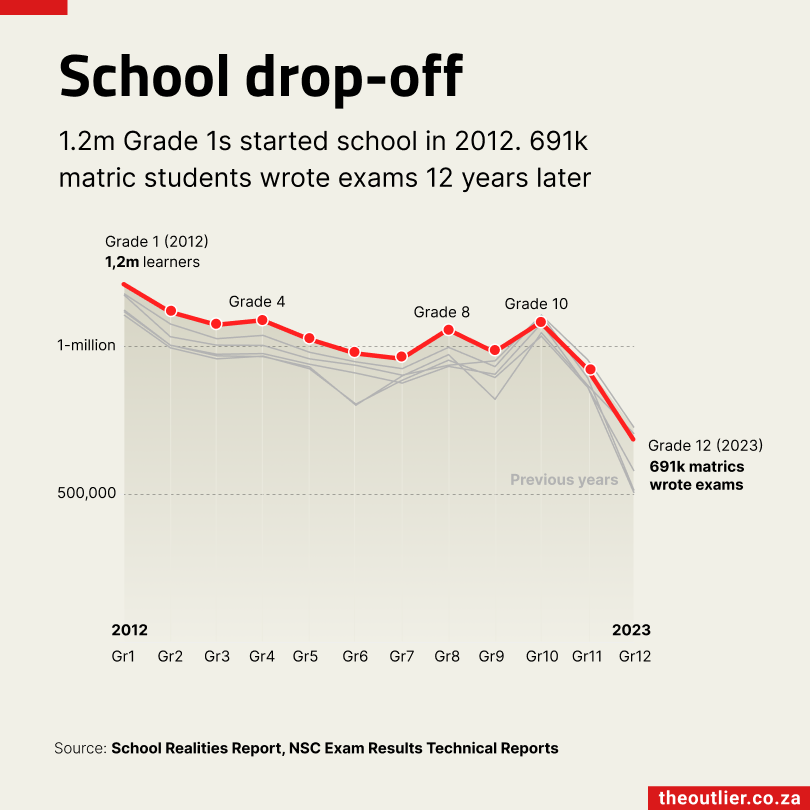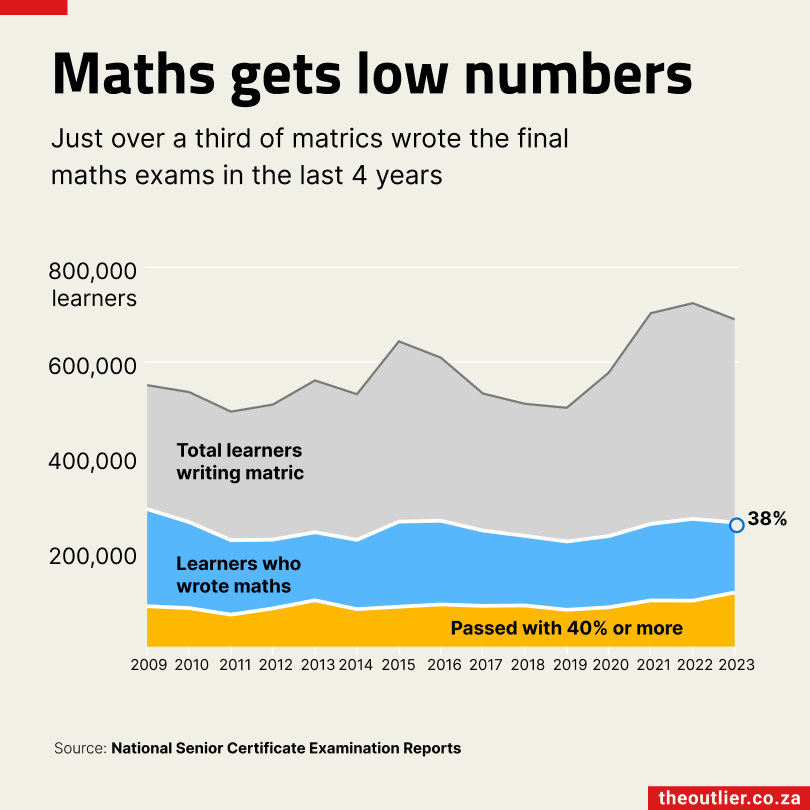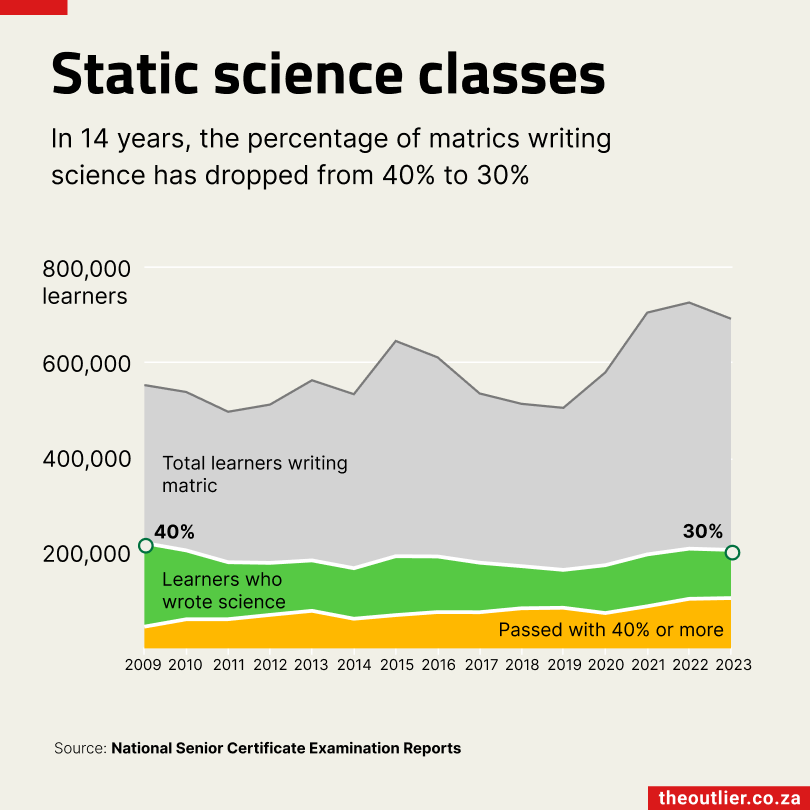South Africa has recorded the highest matric pass rate since at least 2009 with 82.9%. Almost 573,000 of the 691,160 young adults did enough to receive their National Senior Certificates.
Most of the 2023 candidates probably started their school journey in Grade 1 in 2012. That year 1,208,973 children began their first year of primary school.
Somewhere along the way, 4 out of every 10 of those children either failed a grade or grades, left the country or the public school system, died or dropped out of school.
That pattern has repeated itself for years. The chart below shows data for the past 6. The group that passed this year is less than half (47%) the size of the grade 1 class of 2012.

Doing the sums
The proportion of the matric class that writes maths has been decreasing since 2009. For the past 3 years, around a third of learners wrote the NSC maths exams.
The tragedy is that in 2021 and 2022, 80% of them did not pass the subject with 50% or more. Even fewer got the 60% needed to get into a science, technology or engineering degree. In 2021, for example, 13% (34,451 learners) got 60% or more for maths.

This year, 16% (41,273 learners) got 60% in maths, which is, remarkably, higher than the target of 40,355 set by the Department of Basic Education (DBE) for 2024.
The low number of learners taking maths puts a damper on the government’s plan to have 450,000 learners eligible to study maths and science at university by 2030.
In 2023, only 262,016 learners wrote maths, which is about 1,500 more than 2022, but a lot of work will need to be done in the next 7 years to meet the target. In 2023, a mere 6% of the entire matric class passed maths with 60%.

Pushing ahead
On a brighter note, since 2018 notably more girls than boys have passed the final matric maths and science exams. For the past 4 years, 3 out of 5 (~60%) of the learners in maths and science classes were girls.
Since 2001, the DBE has encouraged girls to do maths, science and technology with support programmes, and promoting their participation in olympiads and competitions. Its efforts are paying off.
‘In 2022, for the first time, there were as many female as male achievers of a 60% mathematics mark,’ says Martin Gustafsson, an education economist from Stellenbosch University working at the DBE.

Notebook
- For more charts related to the matric results, visit Outlier Insights
- Charts may be used free of charge by all commercial and non-commercial websites so long as visuals are not altered and include proper attribution to The Outlier. When republishing charts please include a link back to The Outlier
